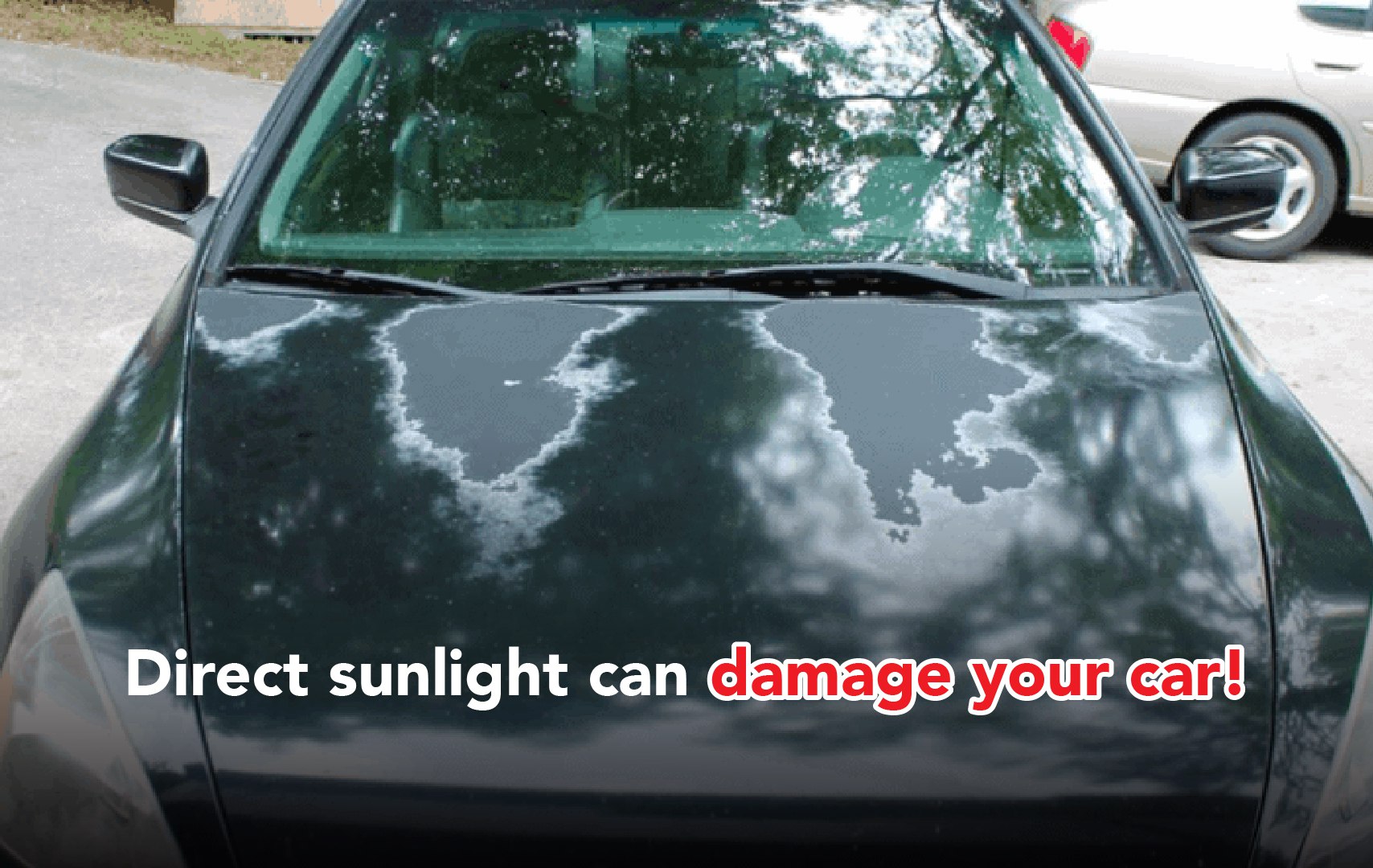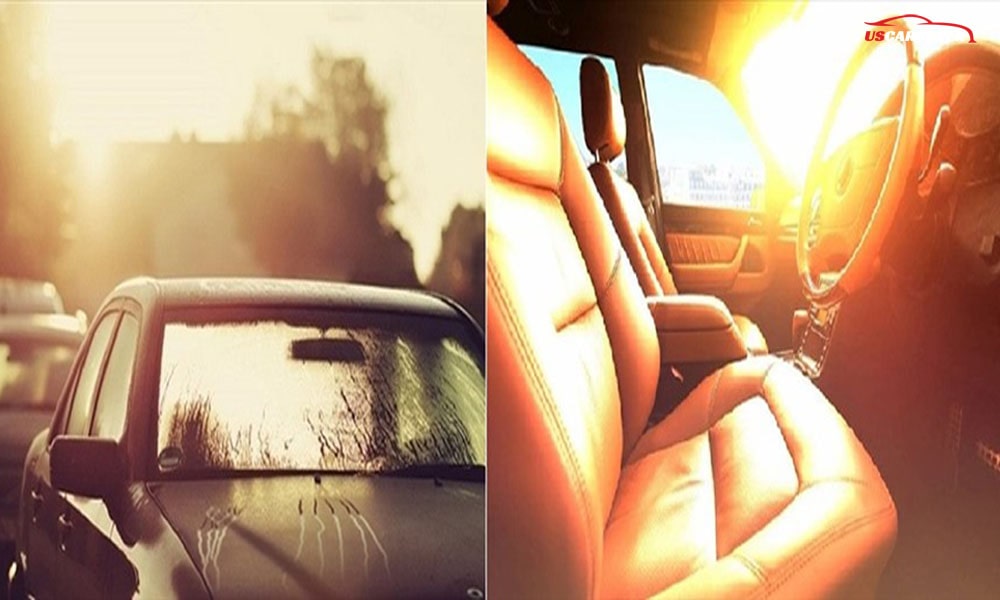
Protecting Your Car from Sun Damage: A Comprehensive Guide
The sun, while vital for life, can be a formidable adversary to your car. Prolonged exposure to its harsh rays can cause significant damage, impacting not only its aesthetic appeal but also its resale value and overall lifespan. The ultraviolet (UV) radiation in sunlight is the primary culprit, causing fading, cracking, and deterioration of various car components. Fortunately, there are several effective strategies to protect your vehicle from the sun’s harmful effects. This comprehensive guide will walk you through the best practices to keep your car looking its best and maintaining its value.
Understanding the Enemy: How the Sun Damages Your Car
Before diving into protection methods, it’s crucial to understand how the sun wreaks havoc on your vehicle:
- Paint Fading and Oxidation: UV rays break down the chemical bonds in your car’s paint, leading to fading and a dull, chalky appearance. This process, called oxidation, is especially noticeable on darker colors.
- Interior Damage: The sun’s heat can cause the dashboard, seats, and other interior surfaces to crack, warp, and fade. Leather and vinyl are particularly vulnerable.
- Headlight Hazing: Headlights are typically made of polycarbonate plastic, which degrades and becomes cloudy when exposed to UV radiation. This reduces headlight brightness and visibility.
- Tire Degradation: Sunlight can dry out and crack tire sidewalls, reducing their lifespan and potentially leading to blowouts.
- Weakening of Rubber and Plastic Components: Rubber seals around windows and doors can become brittle and crack, leading to leaks. Plastic trim pieces can also fade and become damaged.
Prevention is Key: Practical Steps to Shield Your Car
The best way to combat sun damage is to prevent it in the first place. Here are some essential strategies:
-
Parking in the Shade:
- Seek Covered Parking: Whenever possible, park your car in a garage, carport, or covered parking structure. This provides the most effective protection from direct sunlight.
- Utilize Natural Shade: If covered parking isn’t available, look for natural shade under trees or buildings. Be mindful of potential hazards like falling branches or bird droppings.
- Consider the Sun’s Path: Pay attention to the sun’s movement throughout the day and park your car accordingly to minimize exposure.
-
Using a Car Cover:
- Choose the Right Cover: Invest in a high-quality car cover that is specifically designed for outdoor use. Look for covers made from breathable, UV-resistant materials.
- Ensure a Snug Fit: A properly fitted car cover will stay in place during windy conditions and provide maximum protection.
- Clean the Car First: Before putting on the cover, make sure your car is clean to avoid trapping dirt and debris underneath, which can scratch the paint.
-
Window Tinting:
- Reduce Heat and UV Rays: Window tinting can block a significant amount of UV radiation and reduce the amount of heat entering your car, protecting the interior from damage.
- Check Local Laws: Be aware of your local laws regarding window tint darkness, as regulations vary.
- Professional Installation: For best results, have window tint professionally installed to ensure proper application and avoid bubbles or peeling.
-
Dashboard Protection:
- Use a Dashboard Cover: A dashboard cover can protect the dashboard from direct sunlight and prevent cracking and fading.
- Apply a UV Protectant: Regularly apply a UV protectant spray or cream to the dashboard to help block harmful rays and keep the material supple.
-
Seat Protection:
- Use Seat Covers: Seat covers can protect your car’s seats from fading and cracking, especially if you have leather or vinyl upholstery.
- Condition Leather Seats: If you have leather seats, regularly condition them with a leather conditioner to keep them moisturized and prevent cracking.
- UV Protectant for Upholstery: Use a UV protectant spray designed for automotive upholstery on both fabric and leather seats.
Maintenance Matters: Caring for Your Car’s Exterior and Interior
In addition to preventative measures, regular maintenance is crucial for protecting your car from sun damage:
-
Regular Washing and Waxing:
- Remove Contaminants: Washing your car regularly removes dirt, bird droppings, and other contaminants that can accelerate paint damage.
- Apply Wax or Sealant: Waxing or applying a paint sealant creates a protective layer on your car’s paint, shielding it from UV rays and oxidation.
- Choose the Right Products: Use high-quality car wash soap and wax specifically designed for automotive use.
-
Paint Protection Film (PPF):
- Ultimate Protection: PPF is a transparent film that is applied to your car’s paint to provide the ultimate protection against scratches, chips, and UV damage.
- Professional Installation: PPF should be professionally installed for best results.
- Long-Term Investment: While PPF is an investment, it can significantly protect your car’s paint and maintain its value.
-
Headlight Restoration:
- Remove Hazing: If your headlights have become cloudy or hazy, use a headlight restoration kit to remove the oxidation and restore their clarity.
- Apply UV Protectant: After restoring your headlights, apply a UV protectant sealant to help prevent future damage.
-
Tire Care:
- Apply Tire Protectant: Use a tire protectant spray or gel to help prevent cracking and fading of your tires.
- Regular Inspection: Regularly inspect your tires for signs of cracking or damage.
-
Interior Cleaning and Conditioning:
- Regular Cleaning: Regularly clean your car’s interior to remove dust and dirt that can contribute to fading and deterioration.
- Conditioning Leather: As mentioned earlier, regularly condition leather seats to keep them moisturized and prevent cracking.
- UV Protectant for Interior Surfaces: Apply a UV protectant spray to all interior surfaces, including the dashboard, seats, and door panels.
Long-Term Strategies: Planning for the Future
Protecting your car from sun damage is an ongoing process. Here are some long-term strategies to keep in mind:
-
Consider Ceramic Coating:
- Durable Protection: Ceramic coating is a liquid polymer that is applied to your car’s paint to provide a durable, long-lasting layer of protection against UV rays, scratches, and other environmental contaminants.
- Professional Application: Ceramic coating should be professionally applied for best results.
- Long-Term Investment: While ceramic coating is an investment, it can significantly protect your car’s paint and maintain its value.
-
Regular Inspections:
- Catch Problems Early: Regularly inspect your car for signs of sun damage, such as fading, cracking, or hazing.
- Address Issues Promptly: Address any issues promptly to prevent them from worsening.
-
Reapply Protectants:
- Wax and Sealant: Reapply wax or paint sealant every few months to maintain a protective layer on your car’s paint.
- UV Protectants: Reapply UV protectant sprays to interior surfaces regularly.
Conclusion
Protecting your car from sun damage requires a combination of preventative measures and regular maintenance. By following the strategies outlined in this guide, you can keep your car looking its best, maintain its value, and extend its lifespan. Remember, consistent effort and attention to detail are key to combating the sun’s harmful effects. Invest in quality products, establish a routine, and enjoy the rewards of a well-protected vehicle.
